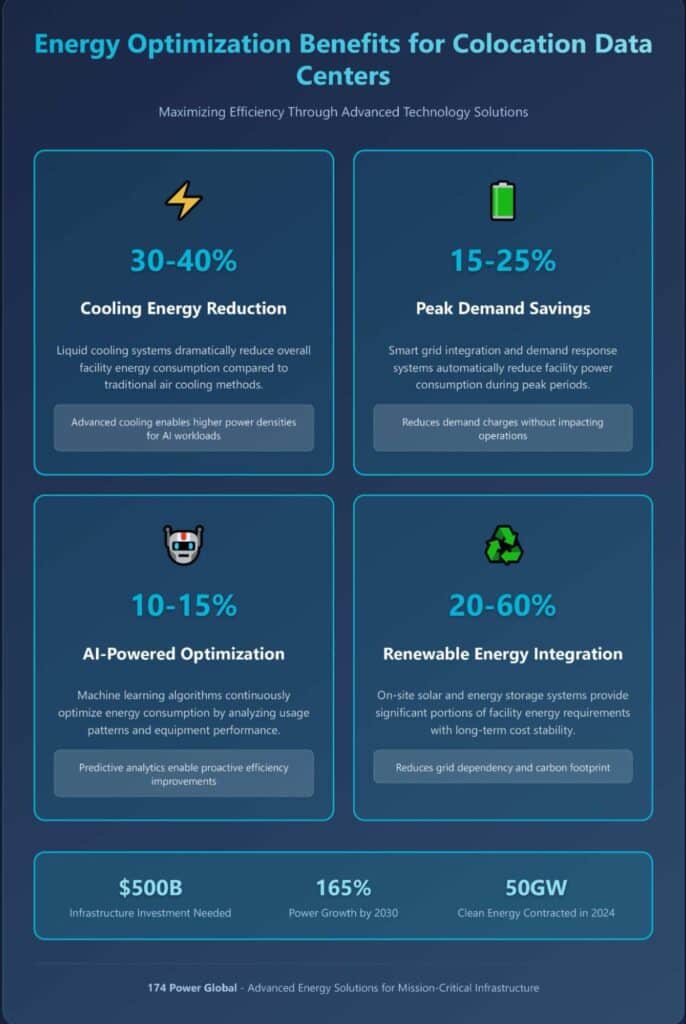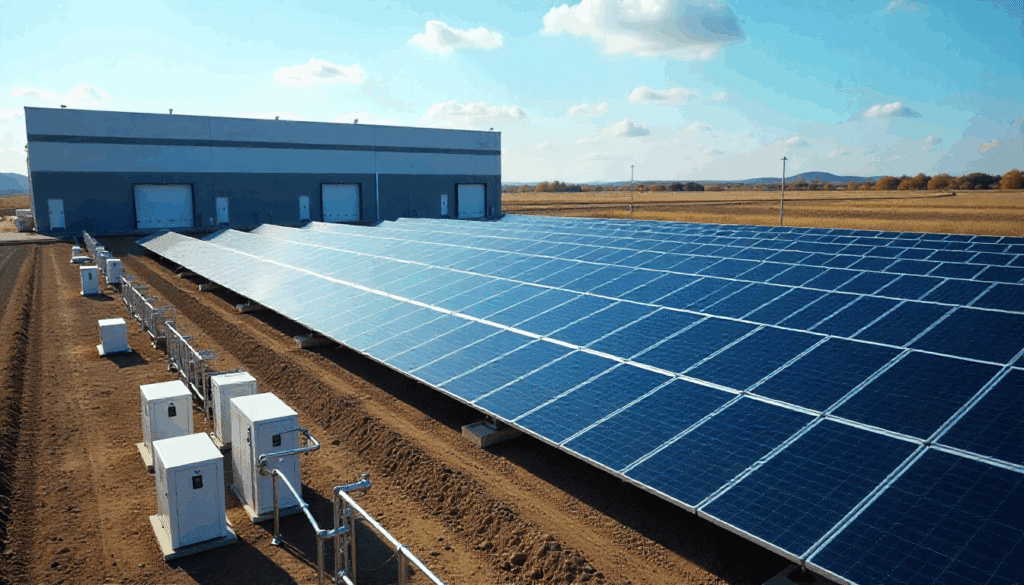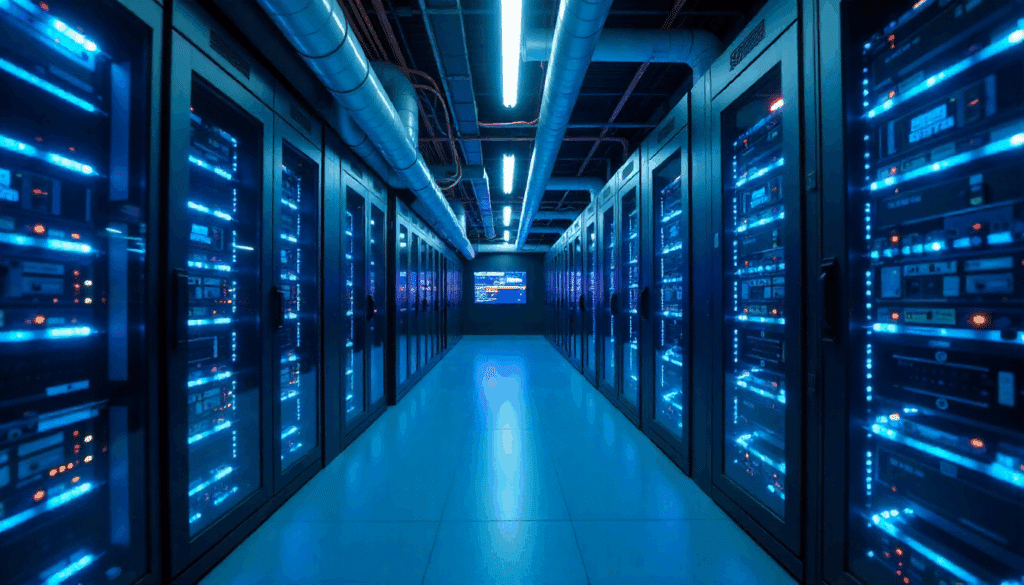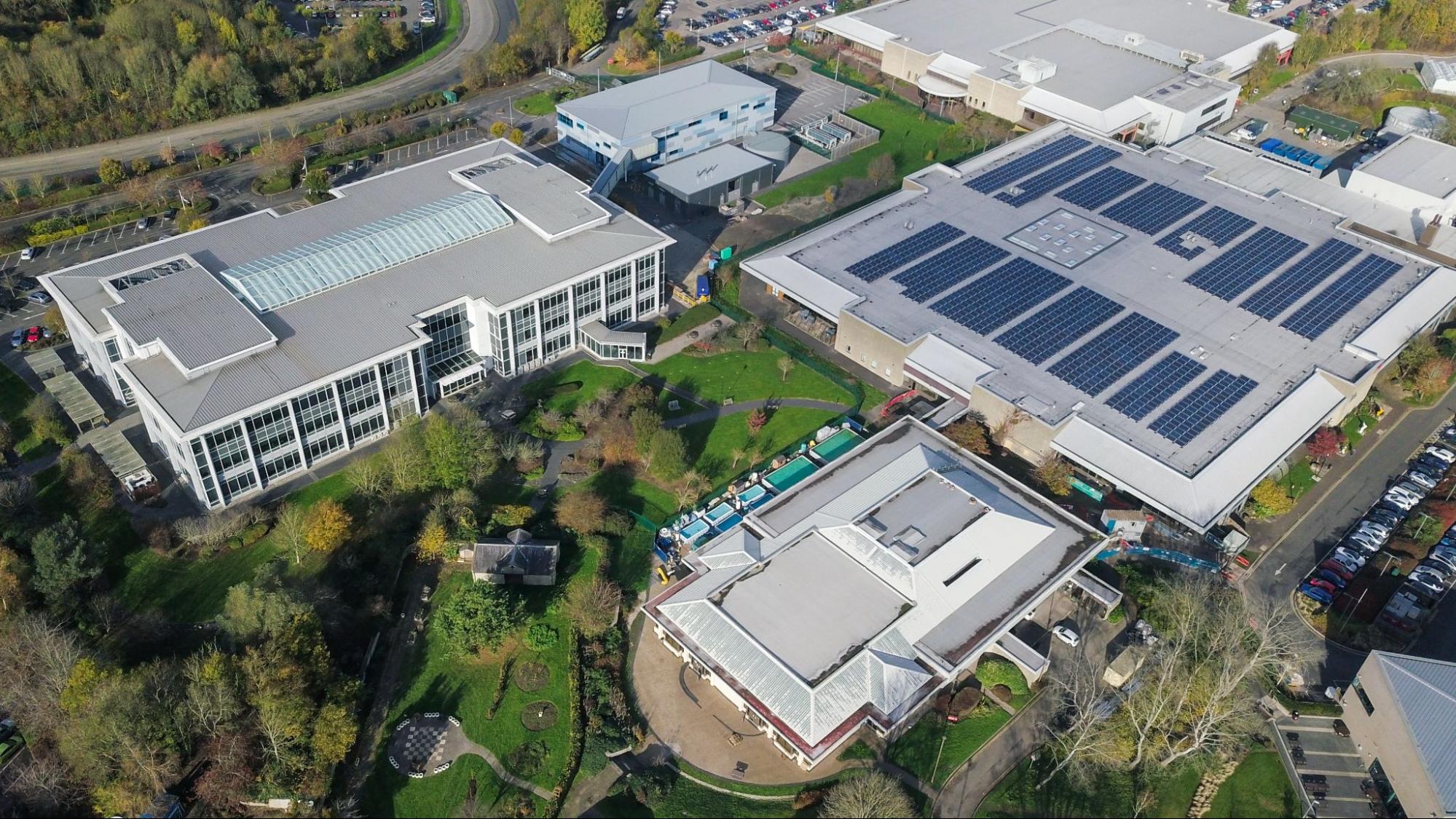Summary
The colocation industry is undergoing a fundamental transformation as operators embrace sustainable energy solutions to meet growing environmental demands and achieve significant operational benefits.
- Market pressure from enterprise customers demanding carbon-neutral hosting options is driving rapid adoption of renewable energy procurement
- Advanced sustainability technologies including on-site solar, battery storage, and green hydrogen are becoming competitive differentiators
- Financial incentives from renewable energy investments deliver 15-30% operational cost reductions while improving long-term price stability
- Regulatory compliance requirements and carbon pricing mechanisms are making sustainable energy solutions essential for future competitiveness
Organizations that proactively adopt comprehensive sustainable energy strategies will capture market leadership while those relying on traditional grid power face increasing competitive and financial pressures.
The colocation data center industry stands at a pivotal moment in its evolution. While data center energy consumption is projected to reach up to 1,050 TWh by 2030, representing nearly 12% of total U.S. annual demand, the sector is simultaneously experiencing an unprecedented shift toward sustainable energy solutions. This transformation extends far beyond environmental responsibility and is reshaping competitive dynamics, operational costs, and customer relationships throughout the colocation ecosystem.
Enterprise customers are increasingly selecting colocation providers based on sustainability credentials, as environmental responsibility becomes a core business imperative rather than a compliance burden. This market shift has created both challenges and opportunities for colocation operators who need to balance growing power demands with environmental commitments while maintaining the reliability and cost-effectiveness that customers expect.
The convergence of technological innovation, regulatory pressure, and market demand is driving a fundamental reimagining of how colocation facilities source, manage, and optimize their energy consumption. From direct renewable energy procurement to advanced energy storage systems, the energy solution for colocation data centers has evolved into a sophisticated ecosystem of sustainable technologies.
What’s Driving the Energy Solution for Colocation Data Centers?
Several interconnected forces are pushing colocation providers toward sustainable energy adoption, creating a perfect storm of market pressure that’s reshaping the entire industry. These drivers span customer requirements, regulatory changes, and compelling economic benefits that make sustainability both necessary and profitable.
Corporate ESG Mandates Transform Customer Requirements
Modern enterprise customers approach colocation decisions with sustainability as a primary evaluation criteria. Major cloud providers like Google, Microsoft, and Amazon have committed to 100% renewable energy operations, creating cascading demands throughout the supply chain that directly impact colocation providers. When hyperscalers evaluate facilities, renewable energy availability often ranks equally with traditional factors like power capacity and network connectivity.
The financial services sector has emerged as a particularly demanding customer segment for sustainable colocation. Banks and investment firms face increasing regulatory scrutiny over their Scope 3 emissions, which include energy consumption from third-party data center services.
The financial services sector has emerged as a particularly demanding customer segment for sustainable colocation. Banks and investment firms face increasing regulatory scrutiny over their Scope 3 emissions, which include energy consumption from third-party data center services. This regulatory pressure translates directly into procurement requirements that favor providers with comprehensive renewable energy programs and transparent carbon accounting capabilities.
Manufacturing and logistics companies migrating to cloud-based operations are similarly prioritizing sustainable hosting options. These organizations often have established carbon reduction targets that extend to their digital infrastructure choices. Colocation providers without credible sustainability programs find themselves excluded from major enterprise RFPs before technical or pricing discussions even begin.

How Are Regulatory Changes Accelerating Green Energy Adoption?
Government policies at federal, state, and local levels are creating increasingly powerful incentives for sustainable energy adoption in data center operations. Carbon pricing mechanisms implemented in various jurisdictions add direct costs to carbon-intensive operations while providing financial advantages to renewable energy users. These policies will only strengthen as climate commitments become more aggressive.
The Inflation Reduction Act has provided substantial tax incentives for renewable energy projects, making sustainable energy investments more financially attractive for colocation operators. Investment tax credits, production tax credits, and depreciation benefits can reduce the effective cost of renewable energy infrastructure by 30-50%, dramatically improving project economics and accelerating payback periods.
However, the regulatory landscape shifted dramatically in July 2025 when new federal legislation ended tax incentives for wind and solar projects. This change has created urgency for colocation providers to accelerate renewable energy projects before incentives disappear, while also highlighting the importance of state-level policies and direct procurement strategies that don’t rely on federal support.
State-level renewable portfolio standards require utilities to source specific percentages of their power from renewable sources, influencing the carbon intensity of grid electricity available to data centers. However, these standards also create opportunities for colocation providers to engage in direct renewable energy procurement that can provide both environmental and financial benefits compared to traditional utility power. States like New York have introduced comprehensive data center sustainability legislation requiring annual energy disclosure reporting and establishing surcharge systems that incentivize efficient operations.
Why Do the Economics Favor Sustainable Energy?
The financial advantages of sustainable energy adoption extend far beyond regulatory compliance and customer requirements. Renewable energy procurement through long-term power purchase agreements provides price stability that traditional utility contracts cannot match. While grid electricity prices fluctuate with fuel costs and market volatility, renewable energy contracts offer predictable pricing for 10-25 year terms.
Operational cost improvements from sustainable energy implementations provide significant advantages compared to traditional grid-dependent operations. These savings result from multiple factors including reduced peak demand charges, improved energy efficiency, and elimination of various utility fees and surcharges. Advanced energy management systems enable dynamic optimization that continuously reduces consumption without impacting performance.
Property values and financing costs also benefit from sustainable energy infrastructure. Green building certifications like LEED and BREEAM command premium valuations while reducing insurance costs and improving access to favorable financing terms. These financial benefits compound over time, making sustainability investments increasingly attractive from pure economic perspectives.
What Are the Key Components of Modern Sustainable Energy Solutions?
Today’s sustainable energy implementations for colocation facilities involve sophisticated combinations of generation, storage, and management technologies. The most successful deployments integrate multiple components that work together to provide reliable, cost-effective, and environmentally responsible power solutions.
On-Site Renewable Energy Generation
Solar photovoltaic systems have become the most widely deployed renewable energy technology for colocation facilities. Modern solar arrays can provide 20-60% of facility energy requirements depending on geographic location, roof space availability, and local solar irradiance levels. Advanced tracking systems and high-efficiency panels maximize energy production while minimizing space requirements.

Wind energy integration presents opportunities in specific geographic regions with favorable wind resources. While less common than solar due to space constraints, small-scale wind turbines can complement solar generation to provide more consistent renewable energy output. Combined solar and wind systems often achieve higher capacity factors than either technology alone.
Geothermal energy systems offer unique advantages for colocation facilities by providing both renewable electricity generation and efficient heating and cooling capabilities. Ground-source heat pumps can reduce cooling energy consumption by 30-50% while providing renewable heating during colder months. These systems work particularly well in regions with moderate climate conditions.
Advanced Energy Storage and Grid Services
Battery energy storage systems have evolved from simple backup power solutions to sophisticated energy management platforms that provide multiple value streams. Modern lithium-ion storage systems can capture excess renewable energy production, provide grid stabilization services, and optimize facility energy costs through demand management and peak shaving capabilities.
Energy storage integration enables colocation facilities to participate in utility demand response programs that provide additional revenue while supporting grid stability. These programs typically pay facilities to reduce consumption during peak demand periods, creating new revenue streams that improve project economics while supporting broader grid sustainability goals.
Long-duration energy storage technologies including compressed air, pumped hydro, and emerging solutions like iron-air batteries are beginning to find applications in larger colocation facilities. These technologies can provide backup power for extended periods while enabling facilities to operate independently during grid outages or extreme weather events.
Green Hydrogen and Alternative Fuel Systems
Green hydrogen production using renewable electricity represents an emerging opportunity for colocation facilities with substantial renewable energy capacity. Electrolysis systems can convert excess renewable energy into hydrogen for long-term storage, providing seasonal energy storage capabilities that complement shorter-duration battery systems.
Fuel cell systems powered by green hydrogen offer zero-emission backup power that can operate for extended periods without refueling. Unlike traditional diesel generators, hydrogen fuel cells produce no local emissions and can provide superior power quality while supporting facility sustainability goals. These systems are particularly valuable for facilities with stringent environmental requirements.
Combined heat and power systems using renewable natural gas or hydrogen can provide highly efficient on-site generation while capturing waste heat for facility heating and cooling applications. These systems typically achieve 80-90% efficiency compared to 35-45% for traditional grid electricity, providing both environmental and economic benefits.
How Are Companies Actually Implementing These Solutions?
While the technology components are important, successful sustainable energy adoption comes down to practical implementation strategies that work in the real world. The most effective approaches follow proven methodologies that balance technical requirements with financial realities and operational constraints.
Phased Deployment Approaches for Existing Facilities
Successful colocation power strategies typically follow structured implementation phases that minimize operational disruption while maximizing financial returns. The first phase usually focuses on energy efficiency improvements including LED lighting, advanced HVAC controls, and power management systems that can reduce overall consumption by 15-25% with relatively modest investments.
Phase two implementations commonly include on-site renewable energy generation, starting with rooftop solar installations that can be deployed without disrupting facility operations. These projects typically achieve payback periods of 5-8 years while providing long-term energy cost reductions and renewable energy certificates that support sustainability reporting requirements.
Advanced phases incorporate energy storage systems, grid services participation, and alternative fuel technologies that transform facilities into comprehensive energy management platforms. These implementations require more sophisticated engineering and higher capital investments but offer the greatest long-term value through multiple revenue streams and operational flexibility.
Innovative Financing Models and Partnership Structures
Power purchase agreements enable colocation operators to implement renewable energy systems with minimal upfront capital investment. Under these arrangements, third-party developers finance, build, and maintain renewable energy systems while selling power to the facility at predetermined rates. These contracts typically provide immediate cost savings while transferring technical and performance risks to experienced renewable energy developers.
Energy service company partnerships provide comprehensive energy management services including efficiency improvements, renewable energy procurement, and ongoing optimization. These arrangements often include performance guarantees that ensure projected savings while providing access to specialized expertise that may not be available internally.
Green bonds and sustainability-linked financing provide access to capital markets that specifically support environmental projects. These financing options often provide favorable interest rates while demonstrating commitment to sustainability that can enhance customer relationships and competitive positioning in increasingly environmentally conscious markets.
Geographic Considerations for Optimal Implementation
The optimal energy solution for colocation data centers must account for significant geographic variations in renewable energy resources, utility rates, and regulatory environments. Facilities in high solar irradiance regions like Arizona and Nevada can achieve solar capacity factors exceeding 25%, making on-site generation highly economical. Conversely, facilities in regions with limited solar resources may focus on wind energy or off-site renewable energy procurement.
Utility rate structures vary dramatically across regions, influencing the optimal mix of renewable energy, storage, and grid services. Time-of-use rates create opportunities for storage systems to provide significant cost savings, while flat rate structures may favor direct renewable energy generation over storage investments.
State and local incentive programs can dramatically impact project economics and implementation timelines. Regions with aggressive renewable energy targets often provide additional incentives including expedited permitting, property tax abatements, and utility rebates that improve project viability and accelerate deployment schedules.
What’s Driving Energy Savings in Colocation Facilities?
Advanced technologies are transforming how colocation facilities manage and optimize their energy consumption, creating new opportunities for both cost savings and sustainability improvements. These innovations span everything from AI-powered optimization to revolutionary cooling approaches that fundamentally change facility operations.
Smart Grid Integration and Demand Response
Advanced metering infrastructure and automated demand response systems enable the energy solution for colocation data centers to participate actively in grid management while reducing energy costs. These systems can automatically adjust non-critical loads during peak demand periods, reducing facility power consumption by 10-20% without impacting customer operations or data center reliability.
Predictive analytics and machine learning algorithms optimize energy consumption by analyzing historical usage patterns, weather forecasts, and grid conditions to predict optimal operating strategies. These systems can reduce energy costs by 10-15% through improved load scheduling and equipment optimization while maintaining all performance and reliability requirements.
Microgrid capabilities allow facilities to operate independently during grid outages while providing grid services during normal operations. These systems combine renewable generation, energy storage, and intelligent controls to create resilient energy infrastructure that can support both facility operations and broader grid stability objectives.
Innovative Cooling Solutions and Heat Recovery
Liquid cooling systems reduce overall facility energy consumption by 30-40% compared to traditional air cooling while enabling higher power densities required for modern AI workloads. These systems use water or specialized coolants to remove heat directly from IT equipment, reducing the load on facility HVAC systems and improving overall energy efficiency.

Heat recovery systems capture waste heat from data center operations for beneficial use in other facility systems or nearby buildings. Heat pump technologies can upgrade low-grade waste heat for space heating, hot water production, or absorption cooling systems, reducing overall facility energy consumption while supporting broader sustainability objectives.
Free cooling systems leverage outdoor air temperatures to reduce mechanical cooling requirements during favorable weather conditions. Advanced economizer systems can provide substantial colocation energy savings in moderate climates while reducing equipment wear and maintenance requirements through reduced operating hours for mechanical cooling equipment.
AI-Powered Energy Optimization
Artificial intelligence and machine learning systems continuously optimize facility energy consumption by analyzing thousands of data points including server utilization, outdoor conditions, utility rates, and equipment performance. These systems can identify inefficiencies and optimization opportunities that human operators might miss while implementing corrections automatically to maintain optimal performance.
Digital twin technology creates virtual replicas of facility energy systems that enable sophisticated modeling and optimization without impacting actual operations. These models can test different operating strategies, predict equipment failures, and optimize maintenance schedules to maximize energy efficiency while maintaining reliability requirements.
Predictive maintenance systems use sensor data and machine learning algorithms to identify equipment that may fail or operate inefficiently, enabling proactive interventions that maintain optimal energy performance. These systems reduce unplanned downtime while improving overall equipment efficiency through optimized maintenance timing and procedures. Advanced data center energy efficiency strategies are becoming essential for sustainable operations.
What Does the Future Hold for Sustainable Colocation?
The next decade promises exciting developments in sustainable energy technologies and market dynamics that will further accelerate the transformation of colocation facilities. Understanding these trends helps operators prepare for the opportunities and challenges ahead.
Emerging Technologies and Market Trends
Next-generation battery technologies including solid-state batteries, flow batteries, and compressed air energy storage will provide improved performance, longer duration, and lower costs for colocation energy storage applications. These technologies will enable facilities to provide extended backup power while participating more effectively in grid services markets that support broader renewable energy adoption.
Green hydrogen production and fuel cell technologies will become increasingly economical as equipment costs decline and renewable energy costs continue falling. Large colocation facilities may become hydrogen production and distribution hubs that support broader industrial decarbonization while providing zero-emission backup power and long-term energy storage capabilities.
Advanced materials and construction techniques will enable more efficient facility designs that require less energy for cooling and power distribution. These innovations include improved building envelopes, advanced thermal management systems, and integrated renewable energy systems that are designed into facilities from the ground up rather than retrofitted after construction.
Regulatory Evolution and Market Dynamics
Carbon pricing mechanisms will become more widespread and stringent, creating increasingly powerful economic incentives for sustainable energy adoption. These policies will make renewable energy investments more attractive while penalizing carbon-intensive operations, accelerating the transition to sustainable energy solutions across the colocation industry.
Utility rate structures will continue evolving to reflect the increasing penetration of renewable energy and the need for grid flexibility. Time-of-use rates, demand charges, and grid services compensation will create new opportunities for colocation facilities with advanced energy management capabilities while penalizing inflexible operations.
International sustainability reporting standards will require more detailed disclosure of energy consumption and carbon emissions, increasing transparency and accountability for environmental performance. These requirements will make sustainability credentials increasingly important for customer acquisition and retention while creating competitive advantages for early adopters of sustainable energy solutions.
Investment Opportunities and Growth Projections
The global market for sustainable colocation services is projected to grow at over 15% annually through 2030, driven by increasing customer demand for environmentally responsible hosting options. This growth will create substantial opportunities for operators who can successfully implement comprehensive sustainable energy strategies while maintaining competitive pricing and performance.
Venture capital and private equity investment in sustainable data center technologies has increased by over 400% in the past three years, indicating strong investor confidence in the sector’s growth potential. This capital availability will accelerate technology development and deployment while reducing costs for colocation operators seeking to implement advanced sustainable energy solutions. Data center developers contracted 50GW of clean energy by the end of Q3 2024, with solar dominating at 29GW and wind at 13GW.
Government infrastructure spending programs including the Infrastructure Investment and Jobs Act will provide substantial funding for grid modernization and renewable energy deployment that will benefit colocation facilities. These investments will improve grid reliability while reducing interconnection costs and timelines for renewable energy projects.
How Should You Approach Your Sustainable Energy Implementation?
Colocation operators considering sustainable energy implementation should begin with comprehensive energy audits that identify current consumption patterns, efficiency opportunities, and renewable energy potential. These assessments provide the foundation for developing implementation strategies that maximize environmental and financial benefits while minimizing operational risks.
Successful implementations typically require 12-24 months for planning, permitting, and construction, depending on project complexity and local regulatory requirements. Early engagement with utility companies, regulatory agencies, and technology vendors can help streamline approval processes while ensuring optimal system design and integration.
Financial modeling should evaluate multiple scenarios including different technology combinations, financing options, and revenue streams to identify optimal implementation strategies.
These analyses should consider long-term trends in energy costs, carbon pricing, technology performance, and changing regulatory landscapes to ensure that investments remain valuable over their expected operational lifespans. Given recent changes to federal incentive programs, models should also evaluate state-level incentives and direct procurement strategies that don’t rely on federal support.
Partnerships with experienced renewable energy developers and system integrators can provide access to specialized expertise while transferring performance and construction risks to parties with relevant experience. These partnerships often provide more favorable financing terms while ensuring optimal system design and performance. Understanding AI data center power requirements becomes increasingly important as workloads evolve.
Frequently Asked Questions
What is the typical payback period for sustainable energy investments in colocation facilities?
Payback periods vary based on system complexity, local energy costs, and available incentives, but typically range from 3-8 years for most sustainable energy implementations. Simple efficiency upgrades often pay back within 1-3 years, while comprehensive renewable energy and storage systems achieve payback in 5-8 years. However, these investments provide 20-25 year operational benefits that deliver substantial long-term value beyond the initial payback period.
How do sustainable energy solutions impact data center reliability and uptime SLAs?
Modern sustainable energy systems often improve reliability compared to traditional grid-dependent operations. Battery energy storage systems provide superior power quality and faster response times than diesel generators, while microgrids can maintain operations during grid outages. Advanced monitoring and control systems enable predictive maintenance that reduces unplanned downtime while optimizing energy performance.
What percentage of colocation facilities currently use renewable energy?
A growing percentage of colocation facilities currently have some form of renewable energy implementation, ranging from simple green power purchases to comprehensive on-site generation and storage systems. However, this percentage is growing rapidly as customer demands and regulatory requirements drive wider adoption of sustainable energy solutions.
Can existing colocation facilities be retrofitted with sustainable energy systems?
Yes, most existing facilities can accommodate sustainable energy retrofits, though the extent of possible upgrades depends on available space, electrical infrastructure, and structural limitations. Common retrofits include rooftop solar systems, energy storage integration, efficiency improvements, and advanced energy management systems. Retrofit projects can achieve substantial benefits while working within existing facility constraints, though new construction typically offers more optimization opportunities.
How do sustainable energy costs compare to traditional utility power?
Sustainable energy costs are increasingly competitive with traditional utility power, with many renewable energy projects providing immediate cost savings. Long-term power purchase agreements for renewable energy often provide significant cost savings compared to utility rates while offering price stability that traditional contracts cannot match. When including the value of carbon avoidance and grid services, sustainable energy solutions typically provide superior total cost of ownership.
Your Sustainable Energy Partnership Awaits
The transformation of colocation data centers through sustainable energy adoption represents both an environmental imperative and a significant business opportunity. As customer demands, regulatory requirements, and economic incentives continue aligning in favor of renewable energy solutions, the competitive advantages of early adoption will only increase.
Successful energy solutions for colocation data centers require expertise across multiple disciplines including renewable energy development, energy storage integration, grid interconnection, and advanced facility management. The complexity of these systems demands partnerships with organizations that understand both the technical requirements and the regulatory landscape governing sustainable energy deployment.
174 Power Global brings comprehensive experience in developing integrated energy solutions for data centers that combine renewable generation, energy storage, and data center infrastructure to create truly sustainable colocation operations. Our team understands the unique requirements of mission-critical facilities while delivering the comprehensive energy solution for colocation data centers that defines competitive success. Contact our experts to explore how we can help your organization build the sustainable energy foundation that will define competitive success in the evolving colocation marketplace.



